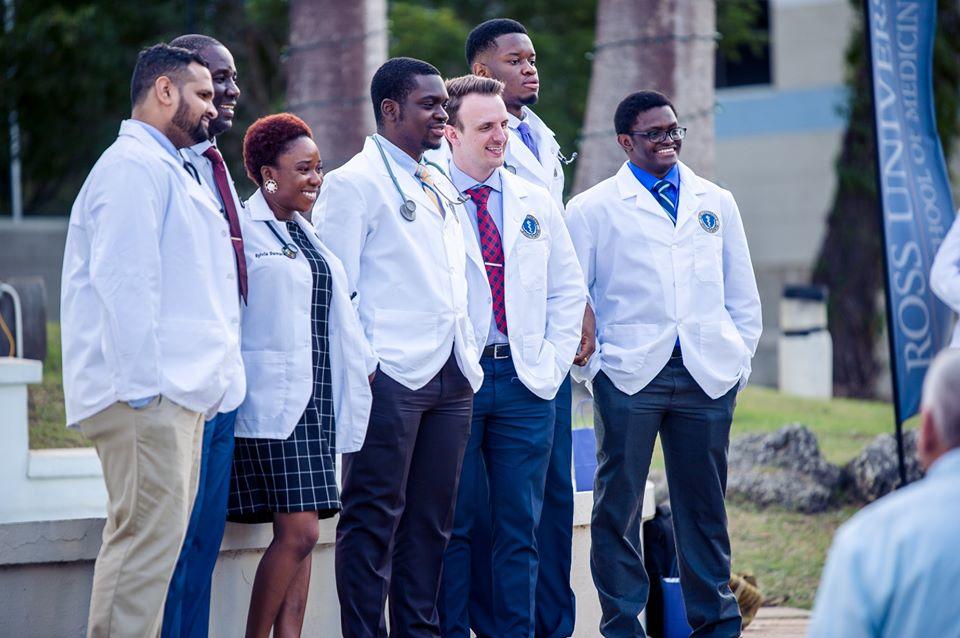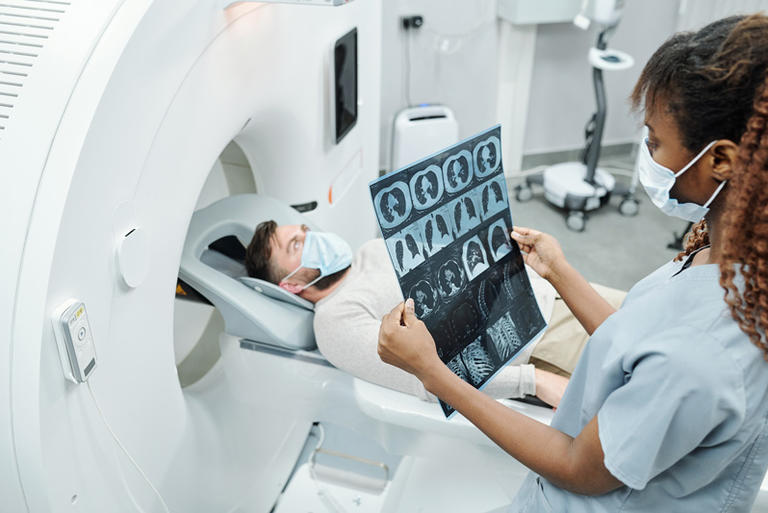One of the biggest decisions medical students face is choosing a specialty of practice. With more than 160 medical specialties and subspecialties to choose from, students at accredited medical schools such as Ross University School of Medicine (RUSM) begin the decision-making process by asking: What are the most in-demand physicians?
As the nation’s population expands and ages, it faces a shortfall of physicians across the specialty spectrum. According to projections made by the Association of American Medical Colleges (AAMC), the United States will see a shortage of between 37,800 and 124,000 physicians by 2034, including a shortage of between 17,800 and 48,000 primary care physicians — a group that includes some of the most in-demand specialties.
The Top 10 Most In-Demand Medical Specialties
Doximity, a leading digital platform for medical professionals, releases an annual Physician Compensation Report that details physician pay, naturally, but also covers physician demand by metro area and specialty as well as other relevant information. The 2023 report, for example, found that Tallahassee, Florida, and Springfield, Illinois, have the highest demand for physicians in the United States, and that family medicine is the most sought-after specialty in the country. Indeed, family medicine has topped the in-demand list now for several years, but the top ten list has shifted since the COVID-19 pandemic: psychiatry has moved up from fourth place (2018 report) to second place in 2022, succeeding internal medicine and emergency medicine. A branch of that specialty, child and adolescent psychiatry, made its first appearance on the list in 2022, peaking at number five.
1. Family Medicine
Family physicians are the only specialists qualified to treat the full spectrum of diseases and injuries across the population. According to the American Academy of Family Physicians, they provide comprehensive health care for people of all ages. They are usually primary care doctors who serve as a patient’s main point of contact for any health concern and help coordinate patient care with other specialists.
Length of residency training: Three years
2. Psychiatry
Psychiatrists are physicians who diagnose and treat mental, emotional, and behavioral disorders, according to the American Psychiatric Association. They are qualified to treat mental and physical conditions related to psychological problems. Psychiatrists use various treatments, including medications, psychotherapy, and other interventions, to treat everything from depression and mood disorders to substance abuse and weight management.
Length of residency training: Four years
3. Internal Medicine
Internists treat a wide range of simple and complex diseases and conditions in adults, according to the American College of Physicians. Internists treat such chronic conditions as diabetes and heart disease. They often serve as an adult patient’s primary care physician for preventive and wellness screenings and they help coordinate patient care with other specialists. Internal medicine covers all medical problems and organ systems in adults, making it an ideal foundation for physicians who wish to pursue additional training.
Length of residency training: Three years
4. Emergency Medicine
Emergency medicine physicians provide medical treatment to people needing acute and immediate care, according to the American College of Emergency Physicians. These physicians often treat people who have urgent, life-threatening injuries or conditions. They frequently work as part of a team in a hospital emergency department.
Length of residency training: Three to four years
5. Child and Adolescent Psychiatry
Specialists in this field diagnose and treat disorders of thinking, feeling, and behavior affecting children, adolescents, and their families. Child and adolescent psychiatrists perform diagnostic examinations to evaluate patients, while also considering biological, psychological, and social factors, before executing a treatment plan. Postgraduate training for child and adolescent psychiatrists includes three years of residency training in internal medicine, neurology, and general psychiatry with adults, and then two years of specialized training in psychiatric work with children, adolescents, and their families.
Length of residency training: Five years
6. Obstetrics and Gynecology
Obstetricians and gynecologists (OB-GYNs) specialize in the health of women before, during, and after their childbearing years, according to the American Medical Association. They have expertise in pregnancy, childbirth, and treating conditions and disorders related to the reproductive system. It is a procedure-based specialty that requires both medical and surgical skills.
Length of residency training: Four years
7. Anesthesiology
Anesthesiologists specialize in anesthesia administration, pain management, and critical care medicine, according to the American Society of Anesthesiologists. During surgical procedures, they deliver general anesthesia, monitor sedation, and deliver regional or local anesthesia. Post-surgery, they help manage patients’ pain.
Length of residency training: Four years
8. Urgent Care Medicine
Urgent care is the middle ground between primary care and emergency medicine. Urgent care physicians provide episodic, unscheduled evaluation and treatment of patients with minor illnesses or injuries, especially those without multiple symptoms, underlying conditions, or other complications. Many urgent care patients do not have a primary care provider, or they cannot wait the days or weeks it may take to see their regular doctor.
Length of residency training: Three to four years
9. Geriatric Medicine
This medical subspecialty deals with the aging process and the diagnostic, preventive, rehabilitative, and therapeutic aspects of illness or injury in older adults. A geriatric physician may visit patients in their homes while also working in an office, hospital, nursing home, or other care facility. Geriatric doctors complete a three-year residency in internal or family medicine or psychiatry and then do a one-year fellowship in geriatric medicine. Some medical colleges offer four-year combined medicine-geriatrics residencies.
Length of residency training: Four years
10. Hematology and Medical Oncology
Hematologist-oncologists specialize in the diagnosis, management, treatment, and prevention of such blood cancers and diseases as anemia, leukemia, lymphoma, and sickle-cell disease, as well as resultant tumors and blood and marrow transplantation. Specialists in this field may follow clinical or research career paths. To be a hematologist-oncologist, doctors must first complete a three-year residency in internal or family medicine or pathology before doing a three-to-five-year fellowship in hematology and medical oncology.
Length of residency training: Six to eight years
How to Pursue a High-Demand Career as a Physician: Start at RUSM
RUSM 2022-2023 students and graduates will enter residency programs in 26 specialties throughout 41 U.S. states and territories, and Canada. In 2022–2023, our new MDs achieved an excellent 98% first-time residency attainment rate*
Encouragingly, our new MDs embarked on their postgraduate training with purpose, hitting the top three in-demand specialties with force: 147 RUSM grads matched in family medicine; 34 matched in psychiatry; and another 219 matched in internal medicine.
Learn more about the RUSM MD program, consider the many specialties you may pursue, and contact us for more information.
*First-time residency attainment rate is the percent of students attaining a 2023-24 residency position out of all graduates or expected graduates in 2022-23 who were active applicants in the 2023 NRMP match or who attained a residency position outside the NRMP match.
Related Resources:




